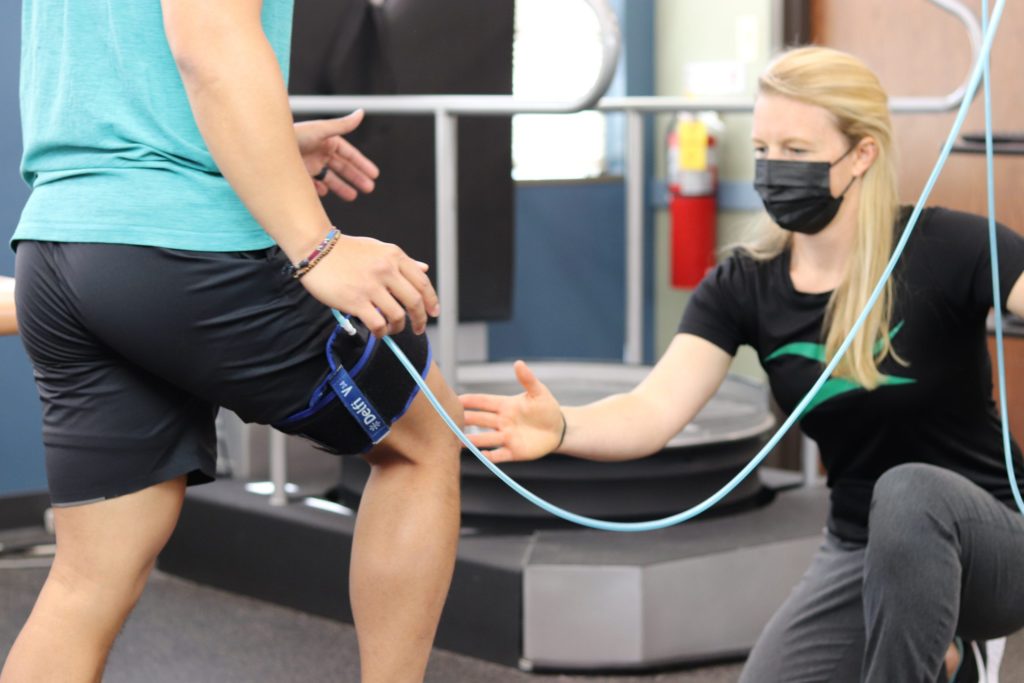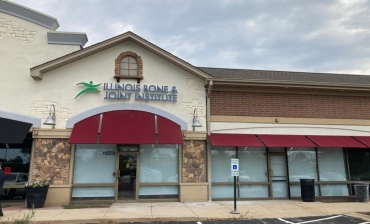Physical therapy (PT) aims to improve a patient’s ability to return to their desired lifestyle/activity level and reduce pain that they have with functioning through a variety of different treatments, including manual therapy, strengthening, stretching, mobility work, and various other modalities. IBJI provides a team approach to care, with close collaboration between physical therapists and physicians to help you achieve your goals.
In this blog, Joseph Hanley, PT, DPT, IBJI Rehab Facility Manager at Sauganash and Lincolnwood, discusses some of the most common misconceptions surrounding physical therapy.

Misconception #1: ‘PT’ Stands for Pain and Torture
The one thing that comes to mind immediately is that physical therapy doesn’t have to be painful! We have patients coming to therapy, thinking it is going to be full of torture techniques leaving them in more pain. That’s not what it stands for. Physical therapy is meant to reduce your pain level and increase your mobility so you can move around safely and without having to worry about loss of function or any risk of future injury or falls.

Misconception #2: Physical Therapy Is Forever
Staying consistent with your exercises is what’s going to help you the most. Doing so allows you to regain strength and range of motion to help reduce your pain and potential stiffness with the goal of improving your functioning. Consistency is key, and our goal is to return a patient to a pain-free level of movement and independence with a home exercise program. We don’t want patients to be coming into the clinic forever. We always want to develop each patient’s independence. It’s a huge priority.

Misconception #3: Physical Therapy Is Just For Post-Surgery Patients
The aim is to return our patients to full mobility and functioning. A lot of times people think about post-surgical care with regards to physical therapy, but I'm helping a lot of patients who haven’t had surgery. I also see patients who have had falls, balance issues, tendonitis, sports injuries, dizziness, work-related injuries, or chronic pain. I also do ergonomic assessments to prevent injuries at work.

Misconception #4: Physical Therapy Is Only for Athletes
We do help a lot of athletes with sports-related injuries, but we also help a lot of other patients. As patients age, their ability to navigate and function safely in the world may deteriorate. This type of deterioration can lead to a fear of falling and avoiding going out into the community. We can help them with the pain or weakness that might be limiting them. The end result is that we’ve improved their confidence so that they can continue to be a part of the community and lead a full life.

Misconception #5: Physical Therapy Requires a Physician Referral
In the state of Illinois, patients enjoy direct access to physical therapy, which means that legally you don’t need a referral to see a physical therapist. If you've seen a physical therapist in the past and felt comfortable and confident with the care you received, you can reach out directly to that therapist. Even if you haven’t seen a PT in the past, you can still enjoy direct access to address your pain or loss of functioning. Being able to see a physical therapist without a physician referral may promote quicker intervention on your recovery. Based on your initial visit, your therapist will determine if you need to consult with a physician or not.

Misconception #6: The Only Benefits of Physical Therapy Are Physical
I have several patients who like to walk for exercise and their pain has limited their ability to do that. Getting those patients back to walking not only has an impact on their physical health, it positively affects their mental health as well. In conjunction with IBJI’s OrthoHealth program, a physical therapist can help you move more efficiently to develop muscle strength, burn fat and meet your weight loss goals, which can also improve mental health and quality of life.

Misconception #7: Physical Therapy Is a One-Size-Fits-All Care
Physical therapy is very individualized care. We always start off with a comprehensive, personalized evaluation where we look at range of motion, strength, flexibility, and conduct a variety of special tests to determine a patient’s pain level or loss of function. It’s a huge list of items to determine what’s causing a patient’s pain or loss of function. We work with the patient to develop an individualized plan that can best help them achieve their goals.

Misconception #8: Physical Therapy Is All Exercise
We use many different techniques and approaches to help our patients. Most patients are familiar with strengthening and stretching exercises, but there are some other techniques that can be beneficial. For instance, dry needling is a technique to address active trigger points in a muscle that could be causing pain or loss of function. Blood flow restriction therapy helps patients gain muscle strength while using minimal resistance and is especially useful for post-operative patients that need to protect their recently repaired tissue. We also use manual therapy, which utilizes our hands to stretch joints and perform soft tissue work to decrease tone in a tight muscle.

Misconception #9: Physical Therapists Don’t Have Degrees
Beginning in the late 2000s, the vast majority of physical therapists started earning their doctorates (DPTs). People who are graduating now all have their doctorates since this is the entry-level required degree for physical therapists. Some of the older physical therapists, although grandfathered in, have chosen to go back to school to earn their doctorates. They bring a wealth of knowledge from their clinical practice years of experience. In addition to that, there’s rigorous continuing education training required each year by the state licensing board. IBJI offers many internal continuing education programs as well. Physical therapy as a profession values continuing education and understanding of research in order to best assist patients along their road to recovery.

Misconception #10: Physical Therapy Doesn’t Work
Your future self will thank you. Physical therapy works! Patients who stay consistent with their exercises are able to achieve their goals established with their physical therapist at the beginning of their treatment plan. They’re able to return to their high functioning selves and continue to engage in sports or community activities.
October is National Physical Therapy Month. IBJI has multiple rehab locations to serve you, with services that can help you to move better and live better. For more information, visit ibji.com/services/therapy/physicaltherapy/.




